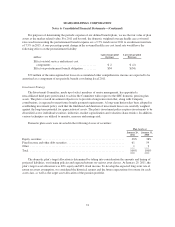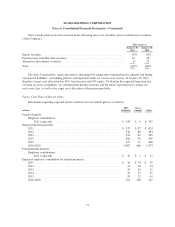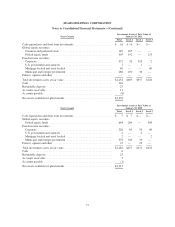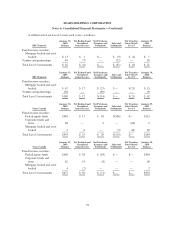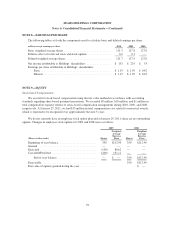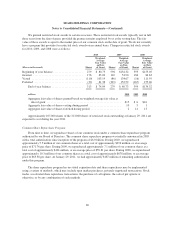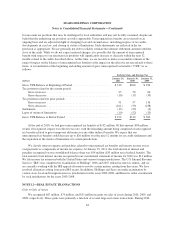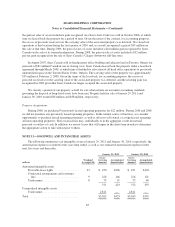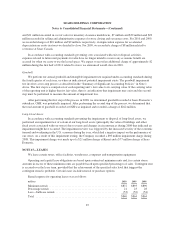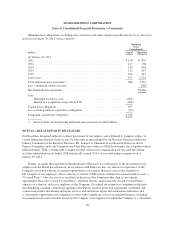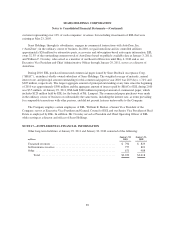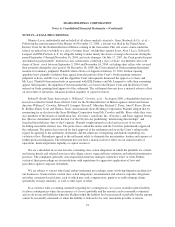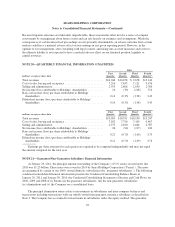Sears 2010 Annual Report Download - page 83
Download and view the complete annual report
Please find page 83 of the 2010 Sears annual report below. You can navigate through the pages in the report by either clicking on the pages listed below, or by using the keyword search tool below to find specific information within the annual report.
SEARS HOLDINGS CORPORATION
Notes to Consolidated Financial Statements—(Continued)
millions
January 29,
2011
January 30,
2010
Deferred tax assets and liabilities
Deferred tax assets:
Federal benefit for state and foreign taxes ................................. $ 167 $ 179
Accruals and other liabilities ........................................... 128 232
Capital leases ....................................................... 143 159
NOL carryforwards ................................................... 250 306
Postretirement benefit plans ............................................ 241 176
Pension ............................................................ 550 664
Deferred revenue ..................................................... 231 202
Credit carryforwards .................................................. 356 156
Other .............................................................. 111 113
Total deferred tax assets ................................................... 2,177 2,187
Valuation allowance ...................................................... (153) (131)
Net deferred tax assets ................................................ 2,024 2,056
Deferred tax liabilities:
Trade names/Intangibles ............................................... 1,161 1,186
Property and equipment ............................................... 292 304
Inventory ........................................................... 379 264
Other .............................................................. 71 203
Total deferred tax liabilities ................................................ 1,903 1,957
Net deferred tax asset ..................................................... $ 121 $ 99
We account for income taxes in accordance with accounting standards for such taxes, which requires that
deferred tax assets and liabilities be recognized using enacted tax rates for the effect of temporary differences
between the financial reporting and tax bases of recorded assets and liabilities. Accounting standards also require
that deferred tax assets be reduced by a valuation allowance if it is more likely than not that some portion of or
all of the deferred tax asset will not be realized.
At January 29, 2011, we utilized the remaining $269 million Federal net operating loss (“NOL”)
carryforwards from the Predecessor Company. We have credit carryforwards of $356 million, which will expire
between 2015 and 2031.
At the end of 2009, we had a state NOL deferred tax asset of $212 million and a valuation allowance of
$131 million. In 2010, there was a net addition to the state NOL deferred tax asset of $38 million, bringing the
ending balance to $250 million. The additional NOLs were the result of additional state losses incurred in 2010,
netted against NOL expirations. The valuation allowance increased by $22 million, to $153 million. Additional
state valuation allowances were created against the state losses incurred in 2010 and were netted against state
valuation allowances reversals due to expiring state NOLs in 2010. The state NOLs will predominantly expire
between 2017 and 2030.
Accounting for Uncertainties in Income Taxes
We account for uncertainties in income taxes according to accounting standards for uncertain tax positions.
We are present in a large number of taxable jurisdictions, and at any point in time, can have audits underway at
various stages of completion in any of these jurisdictions. We evaluate our tax positions and establish liabilities
83



